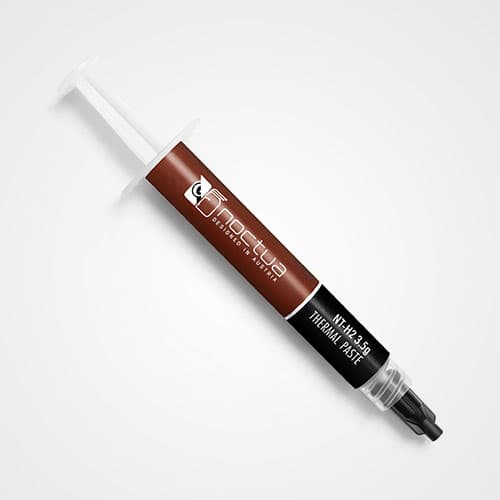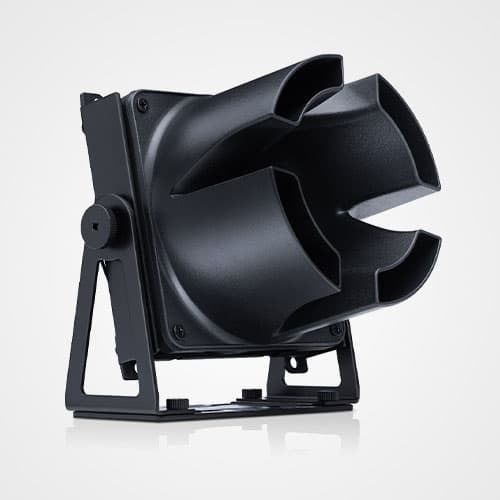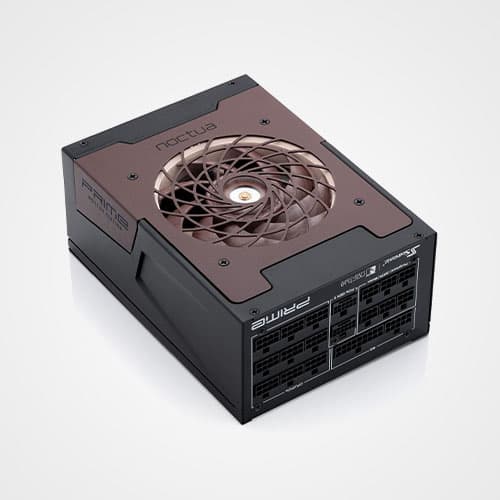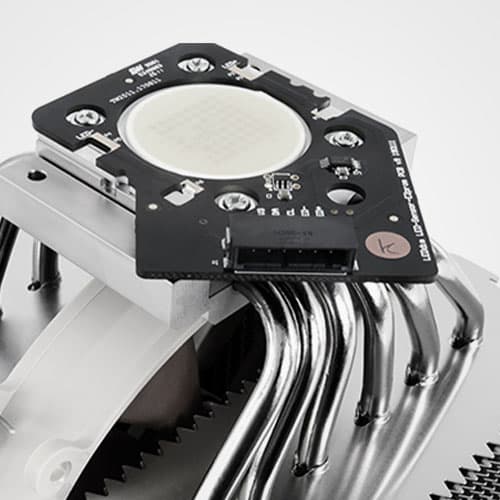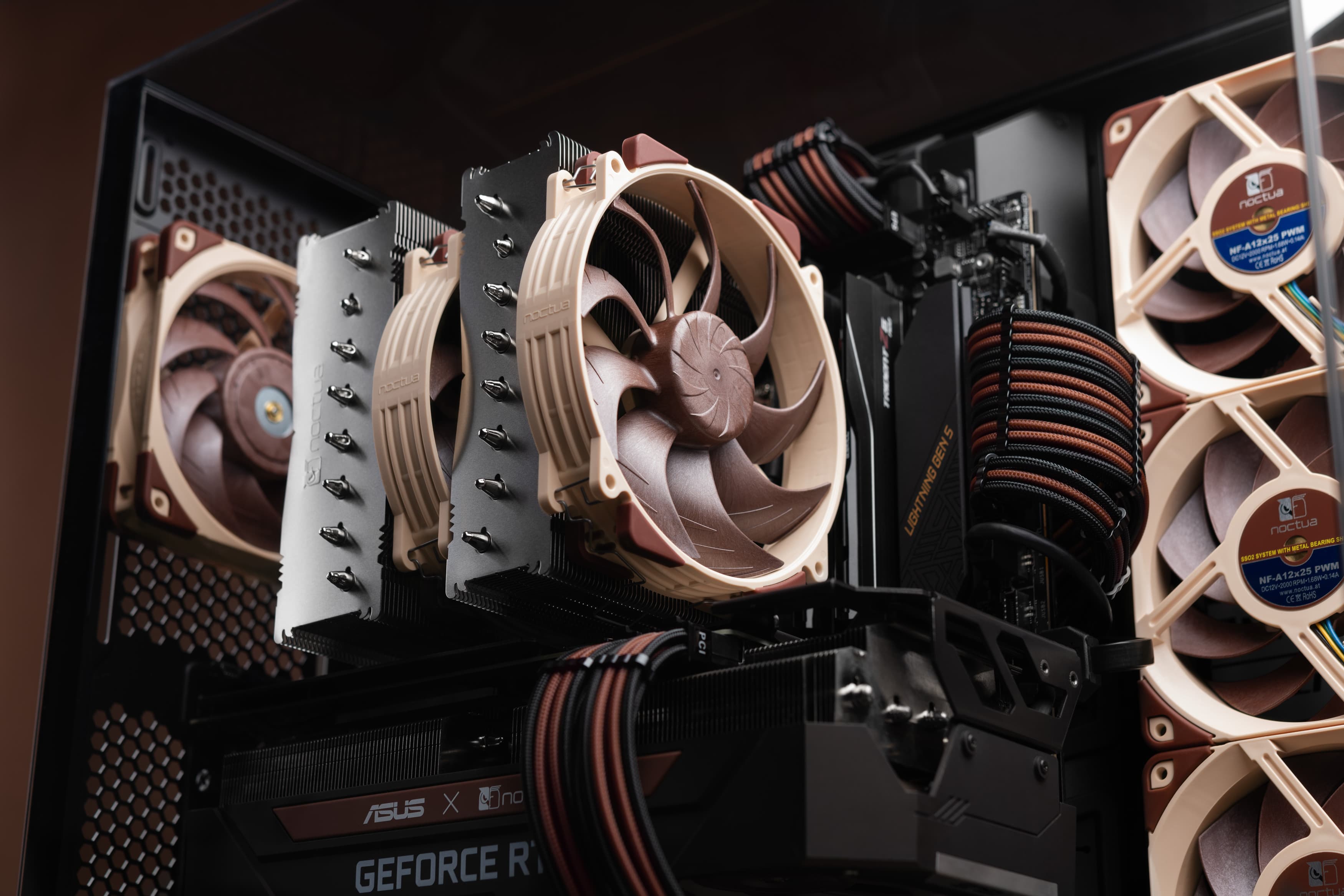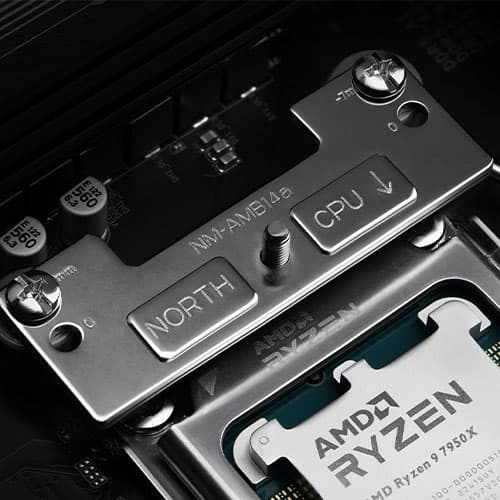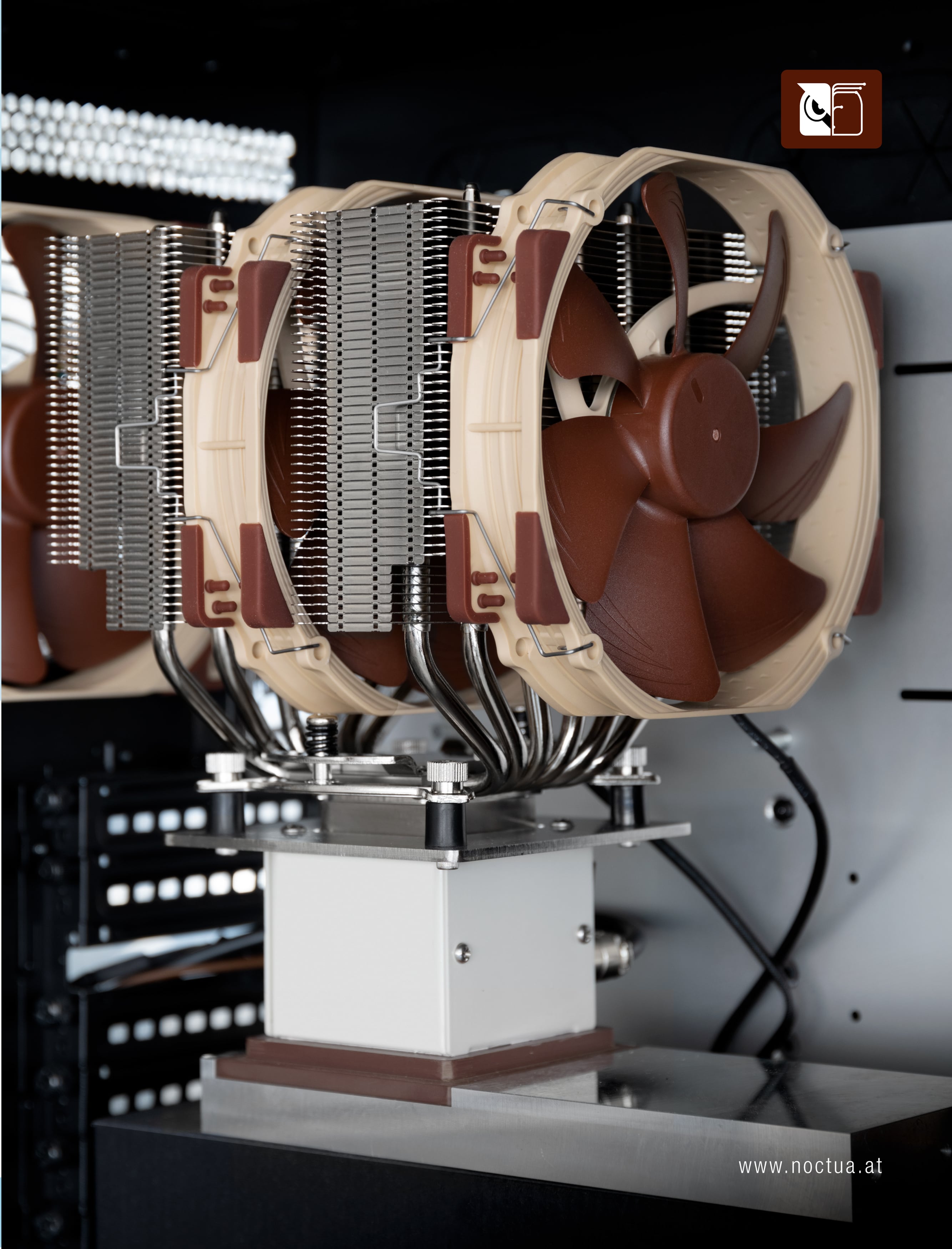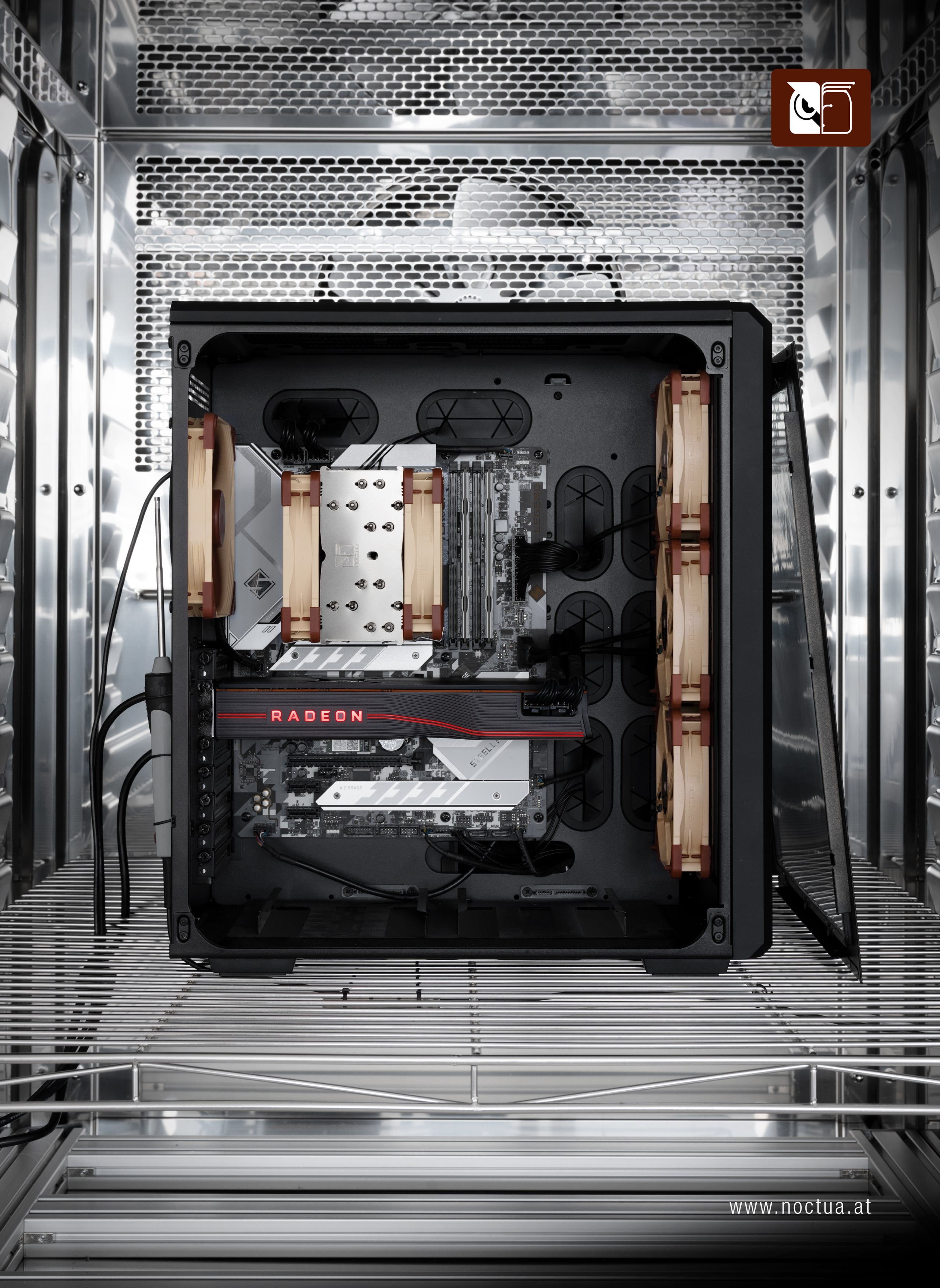Noctua’s Standardised Performance Rating (NSPR) and compatibility classification for CPU coolers
Noctua’s Standardised Performance Rating (NSPR) and compatibility classification for CPU coolers
Measuring, assessing and comparing the performance of CPU coolers in order to select the best solution for a certain processor is much more complex than it may appear at first sight. As the TDP (Thermal Design Power) specifications that are provided by CPU manufacturers and many heatsink suppliers have become increasingly confusing, Noctua aims to help customers making an informed buying decision by offering both a straightforward, general performance rating for each cooler (Noctua Standardised Performance Rating, NSPR) as well as detailed CPU-specific compatibility classifications that allow users to determine how much turbo or overclocking headroom they can expect with a particular model on a specific CPU.
The problems with TDP (Thermal Design Power) ratings
TDP (Thermal Design Power) ratings have been introduced by CPU manufacturers in order to specify how much heat a particular processor will emit, so that customers can select an appropriate heatsink. In response, heatsink manufacturers have started to specify how much TDP their coolers support. As simple and fool-proof as this may sound, there are several severe problems that have made this seemingly straightforward process of selecting a cooler with a TDP rating that matches the TDP rating of your CPU more and more confusing.
First of all, the TDP ratings published by Intel and AMD have become increasingly misleading over the years. Nowadays, it is not uncommon to see so called “95W” or “105W” CPUs producing a heat-output of 150W or more. In the past, pushing CPUs beyond their specified TDP often required manual tuning by the user (overclocking), but nowadays, many CPUs go way beyond their specified TDP ratings automatically, using their turbo modes. These turbo settings are often enhanced even further by many enthusiast motherboards, which do not enforce the recommended power limits from Intel and AMD by default, unless they are manually limited by the user. Considering all this, selecting a heatsink that only supports the specified TDP of the CPU can be problematic and result in lower-than-expected system performance. As a result, the TDP specifications given by CPU manufacturers can no longer serve as a simple guideline in cooler selection.
This is just the tip of the iceberg though. The second key problem is that the amount of heat that a cooler can dissipate can vary greatly from CPU to CPU. For example, the same cooler may be able to dissipate 250W on CPU A but only 150W on CPU B. In particular, CPUs with smaller chips (DIEs) and smaller integrated heat-spreaders (IHS) are much more difficult to cool than larger ones that emit the same amount of heat. In addition to these differences that are due to different heat flux densities, other aspects such as internal DIE configuration and placement on the processor package, as well as the maximum allowed temperature of the processors, also lead to significant variations from model to model. Assigning a general TDP rating to a CPU cooler can therefore end up being misleading as well.
Thirdly, maximum heat dissipation capacity is by no means the only aspect of a heatsink’s thermal performance and perhaps not even the most important one: The thermal performance of heatpipe-based CPU coolers doesn’t scale linearly, so even if cooler A might be able to dissipate up to 350W and cooler B only 300W, it could still be the case that they perform the same at lower heat levels such as 150W, which may be much more relevant for the customer. Max. TDP ratings therefore cannot tell the full story about heatsink performance. This is particularly important for CPUs with high heat flux densities or other internal limitations that cannot be pushed beyond relatively low power levels no matter how much heat the cooler would be able to dissipate. For example, if a CPU cannot go beyond 120W due to internal limitations, cooling performance at 120W will be much more important for the customer than if the cooler could theoretically dissipate 300 or 350W.
Last but not least, it is often unclear how the TDP ratings some cooler manufacturers advertise are actually derived. This is highly problematic because the maximum amount of heat a cooler can dissipate will vary greatly depending on the testing environment and parameters. The results will not only differ from CPU to CPU or if a custom heating element is used instead of a real CPU, they also depend on ambient temperature and the maximum temperature that the CPU or heating element is allowed to reach. For example, the maximum amount of heat a cooler can dissipate will be completely different when the test is conducted at 15°C ambient and the heating element is allowed to reach 90°C than if the test is done at 25°C ambient and the heating element is allowed to reach 50°C. Since most cooler manufacturers don’t specify how their TDP ratings are obtained, it is highly problematic to use these ratings to compare products from different manufacturers. With no parameters specified and therefore no way to control the values, some brands have started to advertise TDP ratings that appear simply unrealistic with regards to real world applications. Taking part in a game of exaggerated specifications is no option for us and this is another reason why Noctua doesn’t publish TDP ratings. Instead, we avoid the various shortcomings of the common TDP ratings by offering a combination of our Noctua Standardised Performance Rating (NSPR) and CPU-specific classifications.
The Noctua Standardised Performance Rating (NSPR)
Noctua’s Standardised Performance Rating (NSPR) is a platform-independent classification system that allows customers to assess and compare the efficiency of Noctua CPU coolers at a glance: The higher the NSPR score, the better the heatsink’s performance. For example, high end coolers such as the NH-D15 will reach a NSPR score of more than 150 whereas compact low-profile coolers will score below 50. Mid-range models such as the NH-U12S will fall somewhere in between:
CPU Cooler | NSPR |
|---|---|
NH-D15 G2 (HBC / LBC) | 228 |
NH-D15 (chromax.black / SE-AM4) | 183 |
NH-D15S (chromax.black) | 167 |
NH-D14 | 161 |
NH-U12A | 169 |
NH-U14S (TR4-SP3 / DX-3647) | 162 |
NH-D12L (chromax.black) | 148 |
NH-U12S (chromax.black / DX i4 / SE-AM4 / TR4-SP3) | 129 |
NH-U12S redux | 129 |
NH-U12S DX-3647 | 157 |
NH-D9L (chromax.black / DX-i4) | 88 |
NH-D9 DX-3647 | 134 |
NH-U9S (chromax.black) | 93 |
NH-U9 (TR4-SP3) | 118 |
NH-U9DX i4 | 87 |
NH-C14S | 119 |
NH-L12Sx77 | 100 |
NH-L12S | 88 |
NH-L12 Ghost S1 Edition | 78 |
NH-L9x65 (chromax.black / SE-AM4) | 67 |
NH-L9i-17xx (chromax.black) | 59 |
NH-L9i (chromax.black) | 59 |
NH-L9a-AM5 (chromax.black) | 61 |
NH-L9a-AM4 (chromax.black) | 61 |
NH-P1 | 42 |
NH-P1 with the NF-A12x25 LS-PWM fan | 89 |
Using a simple formula, tightly controlled thermal efficiency and dissipation capacity measurements are combined to establish a single numerical rating that is both straightforward and highly indicative of real-world performance.
All measurements that form the basis for the NSRP are conducted inside a thermal chamber at a stable ambient temperature of 22°C and tightly controlled environmental parameters. Using a custom-built heating element, which is powered by a laboratory power supply, allows precisely regulating the heat input. All measurements are taken using high-grade thermocouples and repeated three times in order to guarantee that there are no significant deviations. The measurement tolerance for each reading is below 0.05°C.
The first basis for the NSPR is a measurement of thermal efficiency at a fixed heat-load that is chosen according to the performance class of the heatsink, e.g. compact low-profile or passive coolers are tested at 120W whereas high-end tower coolers are tested at 250W. The temperature of the heating element is measured after having reached a stable level for 15 minutes. To make the results comparable between different heat-loads and performance classes, the heat-load in Watt is divided by the delta temperature (temperature difference between heating element and ambient temperature).
The second basis for the NSPR is a measurement of dissipation capacity that reflects a cooler’s ability to sustain high heat-loads. For this test, the heat-load is increased until a temperature of 60°C is reached and kept stable for 15 minutes.
The results of both tests are then combined and balanced by multiplying the first result by ten and dividing the heat-load of the second test by ten:
By combining a measurement at a typical heat-load with a second measurement that tests the heatsinks maximum dissipation capacity, the NSPR offers a more balanced picture of heatsink performance than standard TDP ratings because it reflects both performance in standard use cases and under extreme conditions. Conducted at a stable ambient temperature of 22°C and with clearly specified, realistic parameters (typical heat-loads in the first test, target temperature of 60°C in the second test), it also avoids the pitfall of going into testing scenarios that are remote from real world applications. At the same time, like with any single-number rating, there is no way around the fact that NSPR is a simplification of the complex nature of heatsink performance. In particular, it cannot reflect the fact that cooling performance can differ between platforms, CPU series’ and even from CPU model to CPU model within a series. This is where our CPU-specific classification scheme of heatsink performance steps in.
CPU-specific classification scheme
Acknowledging that cooling performance can vary significantly from CPU to CPU, Noctua combines the NSPR with CPU-specific recommendations as far as turbo and overclocking headroom are concerned. This way, customers get the best of both worlds, namely the combination of an easy-to-understand single number rating that indicates general heatsink performance with processor-specific recommendations that help customers taking a well-informed buying decision for each CPU model.
In the CPU database of our compatibility centre, we classify each heatsink’s performance on a particular CPU according to the following classification:
Performance | |
best turbo/overclocking headroom | |
medium turbo/overclocking headroom | |
low turbo/overclocking headroom | |
compatible without turbo/overclocking headroom | |
cannot keep CPU at base clock under continuous loads | |
Mounting | |
mechanically compatible | |
upgrade kit required for mechanical compatibility (see comment) | |
mechanically incompatible (see comment) |
This simple, easy-to-understand classification scheme allows customers to get a good idea about how much turbo or overclocking headroom they can expect with which cooler model on a particular CPU. This way, it is straightforward to check common questions such as if a compact cooler is sufficient for running a particular processor at base clock or if it’s worth going for a higher-end model that has a higher NSPR rating in order to be able to make better use of the CPU’s turbo mode. Varying from CPU to CPU, higher end heatsinks may or may not provide additional overclocking headroom depending on whether the processor is internally bottlenecked by other factors than the dissipation capacity of the cooler.
Our CPU-specific classifications are based on rigorous, tightly controlled tests that are conducted inside our thermal chambers at a stable ambient temperature of 22°C. Each load test is run for 30 minutes and repeated 3 times for maximum accuracy. We use well-ventilated tower cases for testing in order to ensure that we get the best possible results that can be achieved with each cooler. As our classifications are based on these fully optimised systems and 22°C ambient, it must be noted that results can be worse at higher ambient temperatures or in smaller, less ventilated cases. For example, if we indicate that a low-profile cooler can maintain base clock without turbo headroom on a particular CPU, it may fall slightly below base clock during sustained continuous loads when run in a small, poorly ventilated ITX case. Similarly, if we indicate that a cooler has low turbo or OC headroom on a particular CPU, it may just be able to sustain base clock if the ambient temperature is 30°C and ventilation is mediocre.
Combining NSPR and CPU-specific classification
It’s only the combination of the NSPR and our CPU-specific classifications that makes it possible to circumvent the shortcomings of traditional TDP ratings. While the NSPR provides a similarly simple (yet more balanced), general single number performance specification that enables customers to compare heatsink performance at a glance, the processor-specific classifications of turbo and overclocking headroom in our CPU database responds to the fact that performance can vary from CPU to CPU. In combination, the two ratings allow customers to make a well-informed buying decision.
Related articles
Want to know more on this topic? Explore relevant articles and resources.

NH-D15 G2 vs. NH-D15 performance data
With an NSPR (Noctua’s Standardised Performance Rating) score of 228, the NH-D15 G2 sets a new performance benchmark. But how does it compare to it's predecessor?

Offset AM5 mounting: technical backgrounds
Noctua’s AM5 offset mounting bars shift heatsinks to the south side of the AM5 socket. But why is this necessary, and how much does it improve cooling performance?

NH-D15 G2 versions: heatsink contact quality optimisation explained
The NH-D15 G2 is available in three different base convexity versions. But what is the benefit of this, and which version is the right choice for your setup?

How do the NH-U12A, NH-U12S, NH-U12S redux and NH-D12L compare?
Which Noctua 120mm CPU cooler is right for you? Discover which model offers the best combination of performance, noise, and compatibility for your setup.



